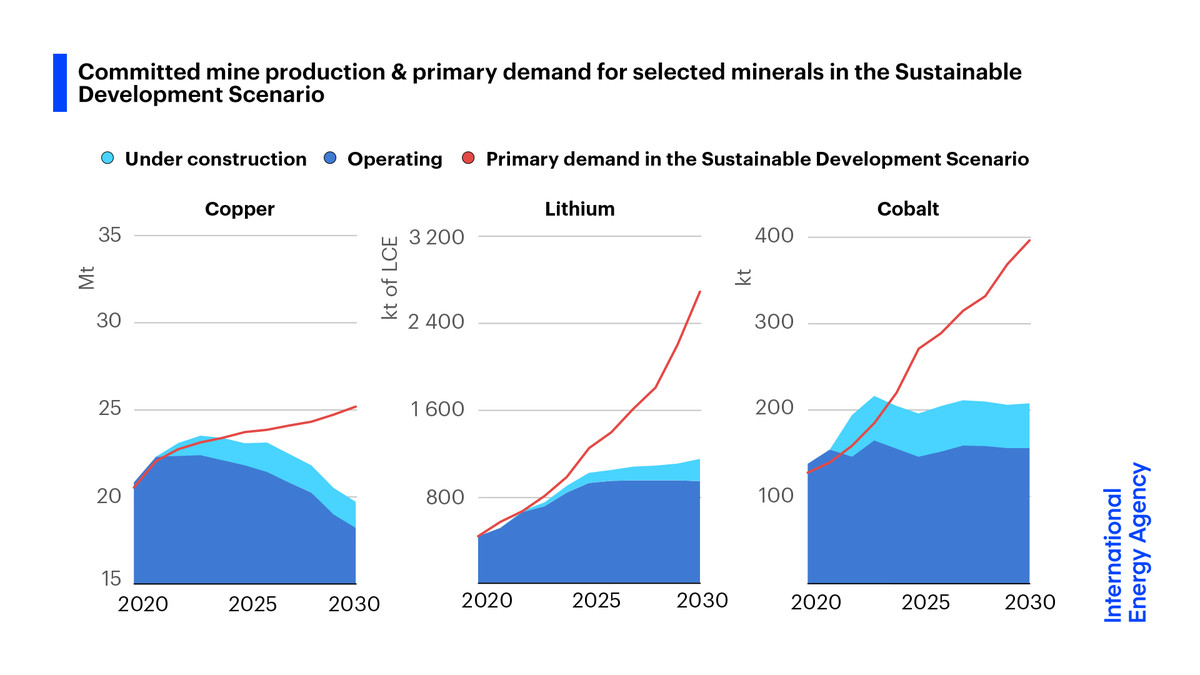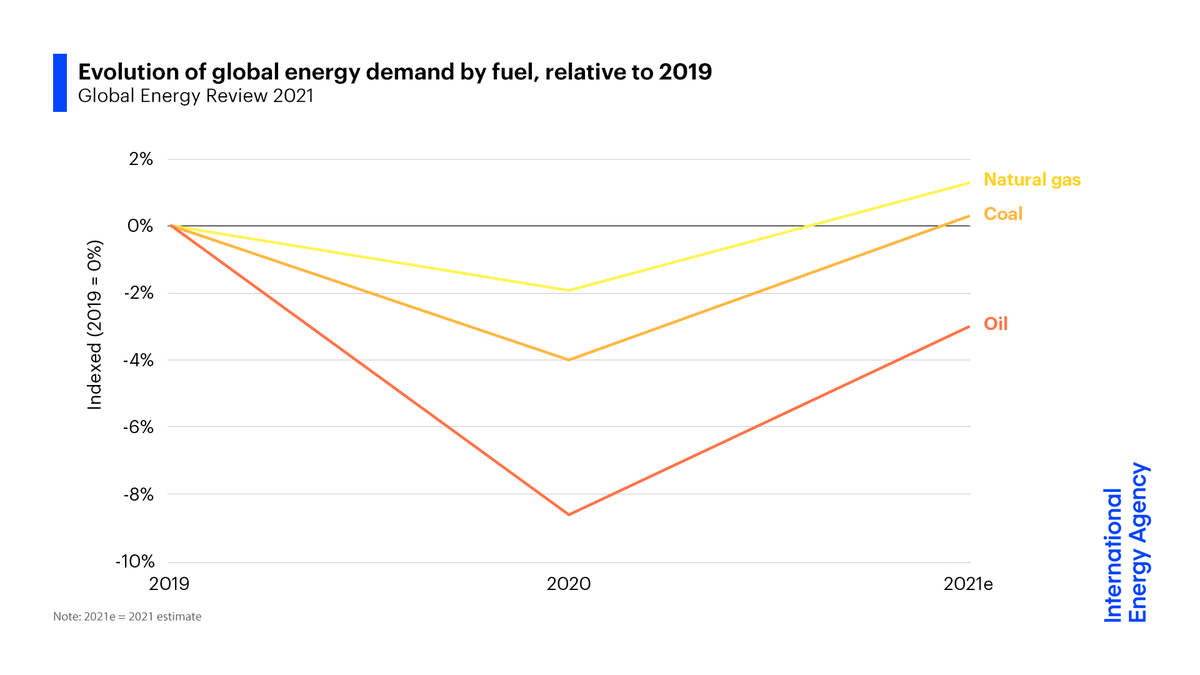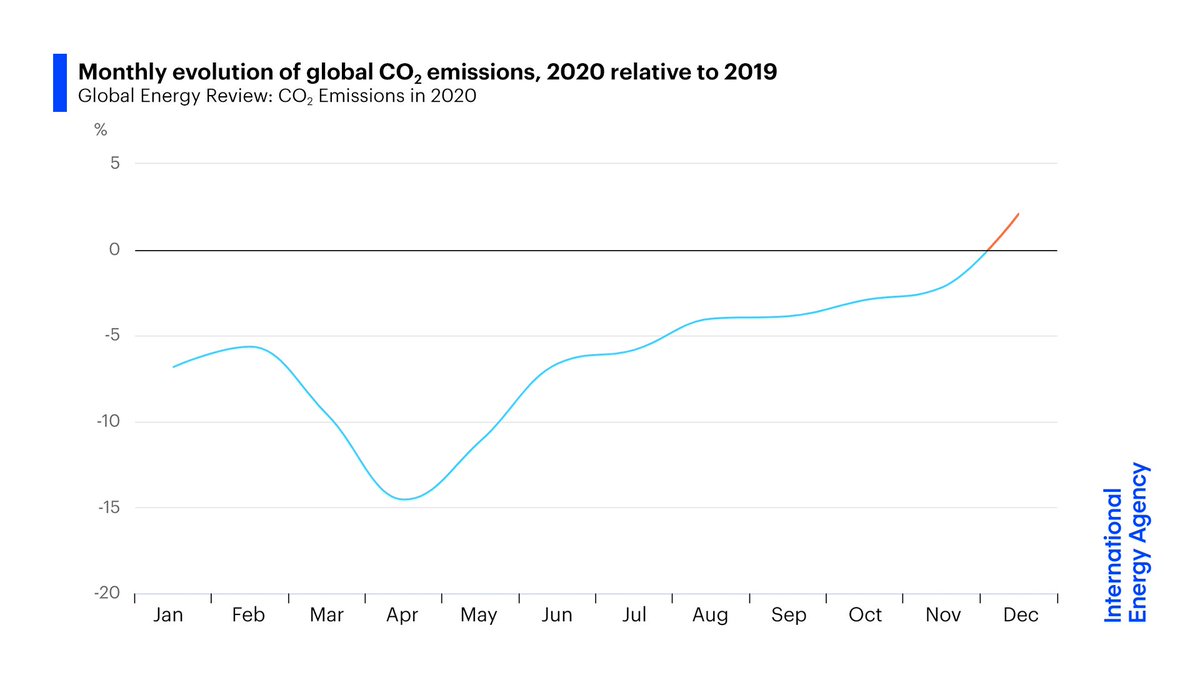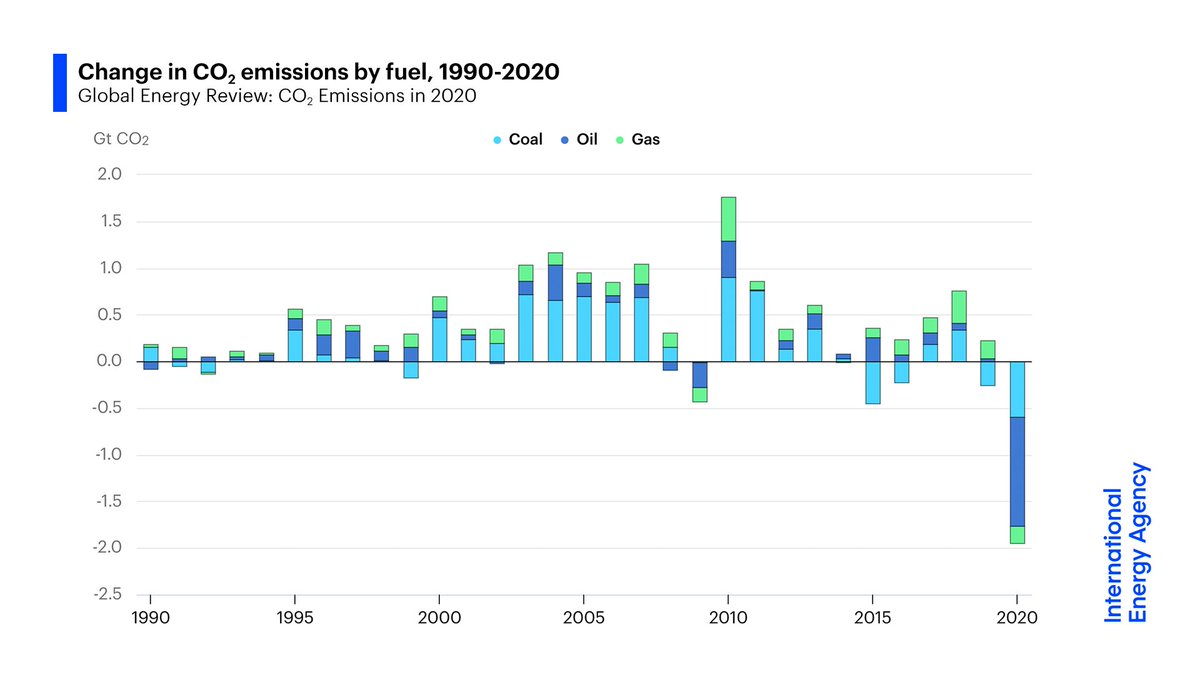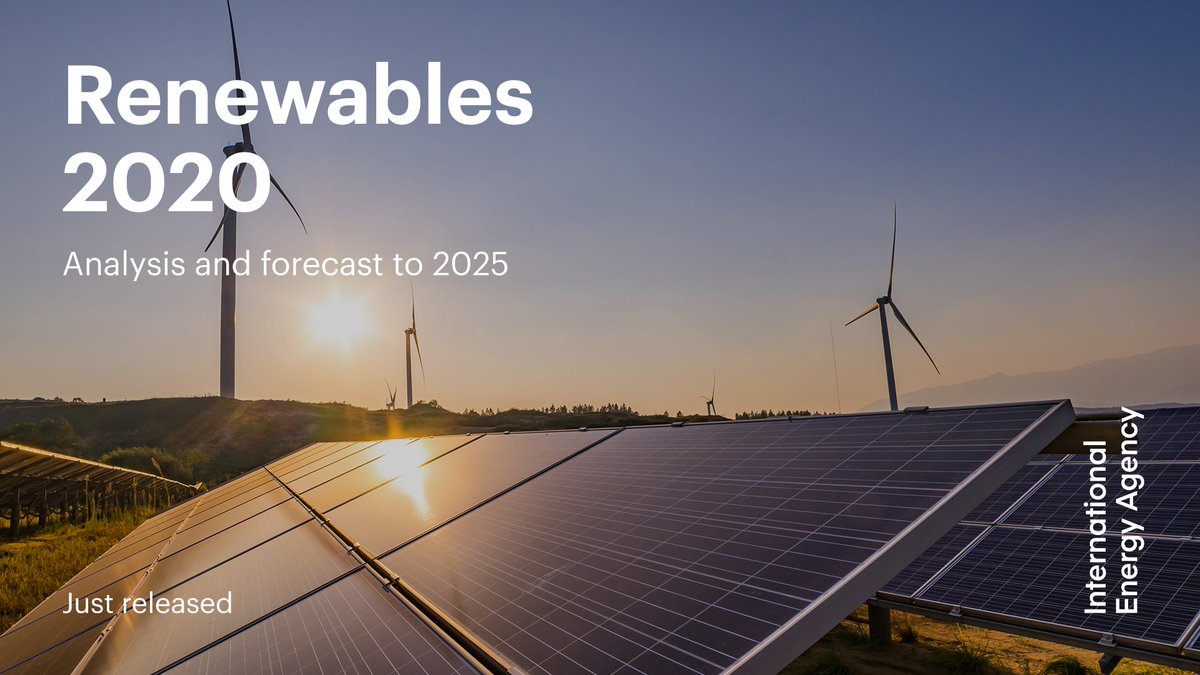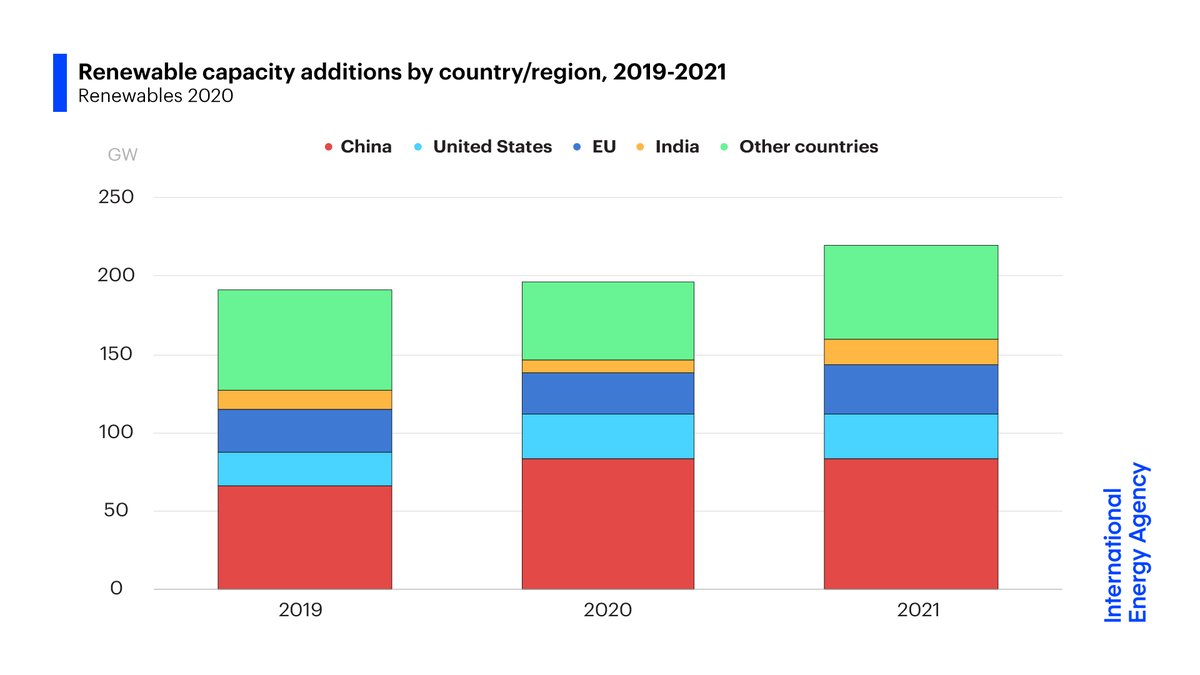
The @IEA just released the world’s first comprehensive roadmap for the global energy sector to reach net-zero emissions by 2050.
Our special report shows the pathway to net zero by 2050 is narrow but still achievable if governments act now.
The report ➡️ iea.li/33PDCAD
Our special report shows the pathway to net zero by 2050 is narrow but still achievable if governments act now.
The report ➡️ iea.li/33PDCAD
The @IEA pathway leads to a global energy system in 2050 dominated by clean energy:
➡️ Solar is the single largest source of global energy
➡️ Renewables provide almost 90% of electricity
➡️ One-fifth of that electricity is used to produce hydrogen
More: iea.li/3orMJRu
➡️ Solar is the single largest source of global energy
➡️ Renewables provide almost 90% of electricity
➡️ One-fifth of that electricity is used to produce hydrogen
More: iea.li/3orMJRu
Our net zero pathway sees a historic surge in clean energy investment to $4 trillion in 2030. This creates millions of jobs & helps lift global economic growth by 0.4 percentage points a year in the 2020s.
The pathway has no need for investment in new fossil fuel supply projects
The pathway has no need for investment in new fossil fuel supply projects

Net zero by 2050 requires massive deployment of available clean & efficient energy technologies this decade.
By 2030, annual additions of solar & wind have to reach 4 times last year's record.
Energy efficiency improvements need to triple the average rate of the last 2 decades.
By 2030, annual additions of solar & wind have to reach 4 times last year's record.
Energy efficiency improvements need to triple the average rate of the last 2 decades.

Most of the reductions in CO2 emissions through 2030 come from technologies already on the market. But in 2050, almost half come from technologies that, while known, are still in development now.
Big leaps in innovation are needed by 2030 to get these technologies ready in time.
Big leaps in innovation are needed by 2030 to get these technologies ready in time.

The transition to net zero by 2050 is for & about people. It must be fair & inclusive.
In our pathway, 14 million jobs are created by 2030 in clean energy supply. But careful policy attention is needed to minimise hardships for workers in fossil fuel sectors where jobs are lost.
In our pathway, 14 million jobs are created by 2030 in clean energy supply. But careful policy attention is needed to minimise hardships for workers in fossil fuel sectors where jobs are lost.

Energy security evolves in the transition to net zero:
➡️ As oil demand declines, supply becomes more concentrated among a small number of producers
➡️ Risks around critical mineral supplies require attention
➡️ Electricity systems need to become more flexible & cyber resilient
➡️ As oil demand declines, supply becomes more concentrated among a small number of producers
➡️ Risks around critical mineral supplies require attention
➡️ Electricity systems need to become more flexible & cyber resilient

Moving the world towards net zero by 2050 requires strong policy actions from governments – working together to tackle challenges that span regions.
In the absence of greater international cooperation, it will take several decades longer to reach net-zero emissions globally.
In the absence of greater international cooperation, it will take several decades longer to reach net-zero emissions globally.

For more on our #NetZero2050Roadmap, join the report’s lead authors – @Laura_Cozzi_ & @TimurGuel – and me for our live launch event at 10am CEST
Read the full report for free: iea.li/33PDCAD
And explore the data: iea.li/3u2miDu
iea.li/3eTAfPy
Read the full report for free: iea.li/33PDCAD
And explore the data: iea.li/3u2miDu
iea.li/3eTAfPy
• • •
Missing some Tweet in this thread? You can try to
force a refresh




